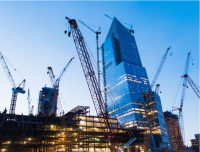
By Dr Christophe Etienne, Senior Nat Cat Specialist, ILS, and Beat Holliger, Senior Products and Solutions Executive, ILS, at Schroders
Investors are increasingly interested in how climate change is impacting the insurance-linked securities (ILS) market. While there is some evidence that climate change is contributing to the frequency and severity of weather-related natural catastrophes, there are numerous other factors driving insurance losses which need to be incorporated into any risk assessment of ILS instruments such as catastrophe bonds. If climate change poses additional challenges, it will potentially also create new opportunities.
However, it is important to note that climate change directly impacts just a portion of the ILS market. Only ILS instruments covering natural catastrophe risks are (potentially) impacted, and within this category just weather-related insurance risks are affected. Other natural catastrophe risks such as earthquakes are not exposed to climate change. The same is true for tsunamis caused by earthquakes below the seabed or volcanic eruptions.
Shorter-term weather events vs. long-term climate change
As ILS performance is primarily driven by the occurrence, or absence, of natural catastrophes, the risk level of ILS instruments is certainly exposed to any global warming trend.
However, the key here is the word ‘trend’: climate change is a gradual and long-term phenomenon, while typical ILS instruments are short-term. Most catastrophe bonds have a term of three years, during which they are tradable in the secondary market, while private ILS instruments typically have a 12-month risk period.
Over these timeframes, climate change should not have a discernible influence on the risk level of a given transaction. Shorter-term phenomena such as El Niño can play a more prominent role over the lifespan of most ILS instruments.
As an example, El Niño phases statistically show higher hurricane activity in the northern Pacific basin and less hurricane activity in the Atlantic basin. Therefore, an El Niño phase tends to be favourable for the overall ILS market. Over the life of, for example, a catastrophe bond covering US wind risk, the El Niño-Southern Oscillation (ENSO) cycle, which causes fluctuations in the sea surface temperatures in the Pacific and Atlantic Oceans, is likely to have a larger impact than long-term climate change-driven alterations.
Risk factors to consider alongside climate change: exposure growth and inflation
While climate-related hazard events are an essential component of risk, so is exposure. Along with urbanisation, people continue to settle in hazard-prone areas, not only in major cities but, for example, along coast lines. This growing accumulation of asset values obviously increases the odds of a major loss from an event which hits these regions.
Meanwhile, the inflationary environment most of the world has been facing since early 2020 has had a notable impact on the prices of goods, including on construction and replacement costs. The insurance sector has therefore also been affected: in the US for instance, the aggregate replacement cost of buildings has risen by an estimated 30–40% since early 2020.
Insurance companies have taken measures to incorporate these inflation effects in order to adequately value their physical exposures. From an ILS perspective, properly understanding how these underlying inflation assumptions are factored in is key to avoiding an underestimation of both the exposures and the associated modelled financial losses from potential natural catastrophes.
The crucial role of modelling in risk assessments
Assessing the risk related to natural catastrophe by incorporating and understanding risk drivers comprehensively is essential. One way to do this is to rely on risk models, which are designed to help assess the economic impact of natural disasters on a selected insurance book. They help to estimate the probability of losses for all types of natural events such as cyclones or earthquakes, including those of magnitudes and at locations that have not been observed in the past. These models, which are developed by third party vendors, rely on a range of potential natural catastrophes listed in a so-called ‘event catalogue’, which are simulated based on historical observations and science knowledge.
Conclusion
If hazard is a key component of the risk, there are many other factors, in addition to climate change, that come into play and need to be included in a risk assessment of the ILS market: building standards, urbanisation, demographic changes, the inflationary environment, and the pricing and attachment levels of ILS.
Insofar as climate change impacts ILS instruments, the effect should be marginal given climate change is gradual and long-term in nature, while ILS instruments typically have a term of one to three years.
It is also important to remember that only ILS instruments that cover meteorological perils such as tropical cyclones are potentially affected by climate change.
Further reading : click here







